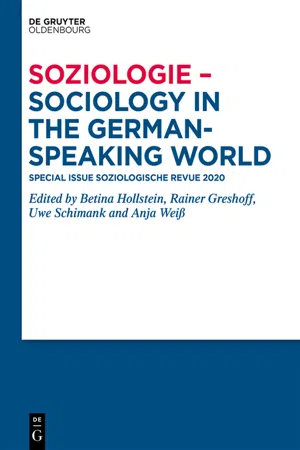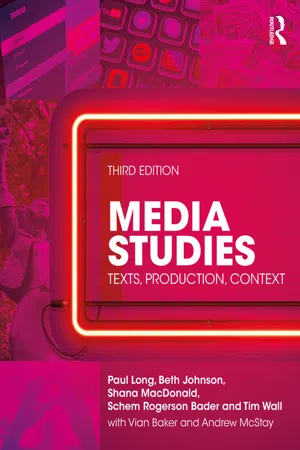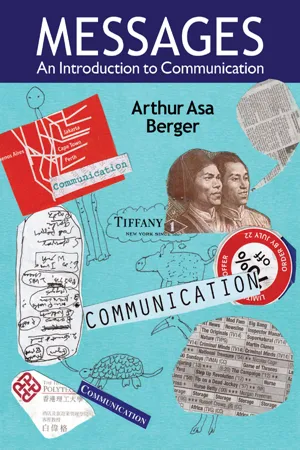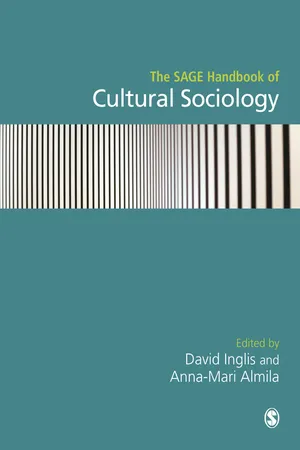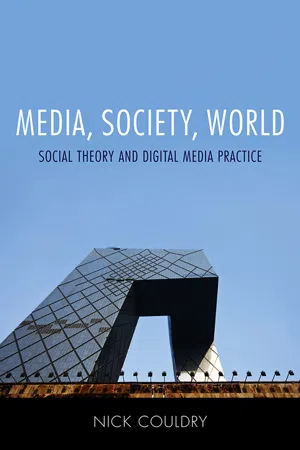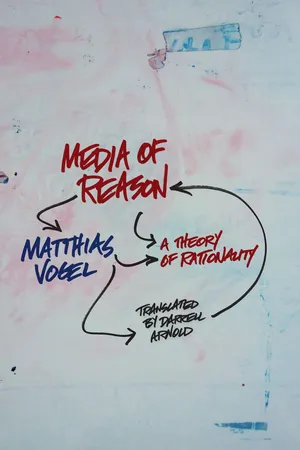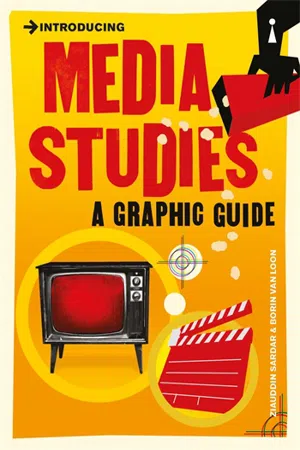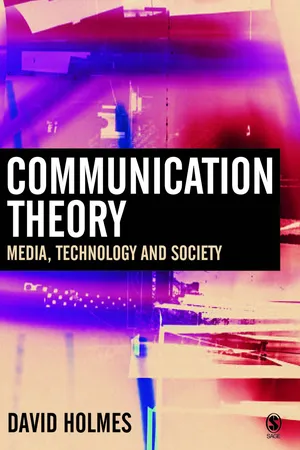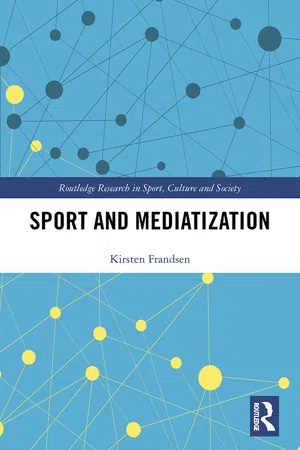Social Sciences
Media Sociology
Media sociology is the study of how media shapes and is shaped by society. It examines the role of media in influencing public opinion, shaping cultural norms, and perpetuating social inequalities. Media sociologists analyze the production, distribution, and consumption of media content to understand its impact on individuals and society as a whole.
Written by Perlego with AI-assistance
Related key terms
10 Key excerpts on "Media Sociology"
- eBook - ePub
Soziologie - Sociology in the German-Speaking World
Special Issue Soziologische Revue 2020
- Betina Hollstein, Rainer Greshoff, Uwe Schimank, Anja Weiß, Betina Hollstein, Rainer Greshoff, Uwe Schimank, Anja Weiß(Authors)
- 2021(Publication Date)
- De Gruyter Oldenbourg(Publisher)
Sutter, 2013 ). But a lot has changed in recent years. If we talk about media today, we may still bring legacy mass media such as newspapers or television into the equation. However, for more and more people media means the various digital platforms such as Instagram, Facebook, or Netflix that many of us now take for granted. Even when we talk about newspapers and television, we are no longer referring to these legacy media but to new digital arrangements instead.Just as the phenomena of Media Sociology have leaned towards the digital, so too has Media Sociology shifted in the approaches it takes, which in turn requires innovative theoretical strategies to help make sense of a media environment in rapid flux that is characterized by a great variety of media. With these changes, however, Media Sociology as a field has entered vague territory. From an international perspective, Silvio Waisbord (2014; 2019) argued that no single coherent Media Sociology exists; rather, sociologists engage with issues of media and communications in different ways. As a consequence, he defined Media Sociology as “the study of media processes and phenomena anchored in classic and contemporary sociological questions and methods” (Waisbord, 2014 : 7). If we take this understanding as a basis for this discussion, Media Sociology extends into the farther reaches of media and communication studies as a scientific discipline. This is also the case for Media Sociology in Germany: both the German Communication Association (Deutsche Gesellschaft für Publizistik und Kommunikationswissenschaft, DGPuK) and the German Sociological Association (Deutsche Gesellschaft für Soziologie; DGS) have specific divisions dedicated to Media Sociology.1 If one considers the shift in media toward the digital, Media Sociology becomes even more complex as it veers into the realms of “digital sociology” (Lupton, 2015 ) and spans many other areas of German sociology such as the sociology of science and technology or social theory (Philipps, 2017 - eBook - ePub
- Denis McQuail, Mark Deuze(Authors)
- 2020(Publication Date)
- SAGE Publications Ltd(Publisher)
For present purposes, the domain of ‘society’ refers to the material base (economic and political resources and power), to social relationships (in national societies, communities, families, etc.), and to social roles and occupations that are socially regulated (formally or informally). The domain of ‘culture’ refers primarily to other essential aspects of social life, especially to symbolic expression (and the way people create shared narratives), values, meanings and practices (social customs and routines, institutional ways of doing things and personal habits). Most of the chapter is concerned with explaining the main theories or theoretical perspectives that have been developed for understanding the way media work in society. Such theories generally take material and social circumstances as a primary determinant for explaining the role of mass media and communication in society. However, and particularly in more contemporary approaches to theory development, there is also scope for recognizing the influence that ideas and culture can have on material conditions. Before theories of media and society are considered, the main issues or broad themes that have framed enquiry into media and mass communication are described. A general frame of reference for looking at the connections between media and society is also proposed. First, we return in more detail to the conundrum of the relation between culture and society. Media, Society and Culture: Connections and Conflicts Mass media and communication can be considered as both a ‘societal’ and a ‘cultural’ phenomenon, and they are also a range of technologies. The media institution is part of the structure of society, and its technological infrastructure is part of the economic and power base, while the ideas, images and information disseminated by the media are evidently an important aspect of our culture (in the sense defined above) - eBook - ePub
Media Studies
Texts, Production, Context
- Paul Long, Beth Johnson, Shana MacDonald, Schem Rogerson Bader, Tim Wall(Authors)
- 2021(Publication Date)
- Routledge(Publisher)
PART THREE Media and social contexts Across the previous parts of this book we have explored ways of making sense of the meanings of media texts and the processes of production that produce those texts, arte-facts, commodities as well as the audiences who consume them. In this part, we take a sideways step to consider the broad social contexts in which all of these things take place. This section concentrates on a number of approaches to thinking about how the ways in which we live and make sense of the world are inflected by the pervasiveness of media in our everyday lives. Such is the reach of TV feeds, advertising, political communications via social media, popular music and so on that it is possible to consider contemporary social organisation and culture in terms of ‘media society’. Modern media, we argue, construct our sense of the social, of past, present and future to such an extent that this is the one undeniably original facet of contemporary life: no one in history has lived like this before, so overwhelmed with information and images, sounds and ideas, to the point where we don’t notice that this is now the world for us. But what does it mean to say such a thing and how can we explore these claims about modern life and media Chapter 8 focuses on issues of power, bringing together some of the themes that have already been touched upon in previous chapters. Questions of the way in which representations work, of issues of the control of media organisations and the effects of media texts and technologies on audiences all feed into this discussion - eBook - ePub
Messages
An Introduction to Communication
- Arthur Asa Berger(Author)
- 2016(Publication Date)
- Routledge(Publisher)
Chapter 7 Mass MediaWith media and culture playing such important roles in contemporary life, it is obvious that we must come to understand our cultural environment if we want control over our lives. Yet there are many approaches to the study of media, culture, and society in separate disciplines and academic fields…. We would advocate the usefulness of a wide range of theoretical and methodological approaches to the study of media, culture, and society, yet we do not believe that any one theory or method is adequate to engage the richness, complexity, variety, and novelty displayed in contemporary constellations of rapidly proliferating cultural forms and new media.Meenakshi Gigi Durham and Douglas M. Kellner, eds. Media and Cultural Studies: KeyWorksThe study of mass communication is based on the premise that the media have significant effects, yet there is little agreement on the nature and extent of these assumed effects. This uncertainty is the more surprising since everyday experience provides countless, if minor, examples of influence. We dress for the weather as forecast, buy something because of an advertisement, go to a film mentioned in a newspaper, react in countless ways to media news, to films, to music on the radio, and so on. There are many reported cases of negative media publicity concerning, for instance, food contamination or adulteration, leading to significant changes in food consumption behaviour.Denis McQuail, Mass Communication Theory: An Introduction , 3rd EditionWe use the term “mass media” to deal with communication between a relatively small number of people, who create and perform the texts carried by the mass media, and large numbers of people—the audiences—who receive the mass mediated communication. With the development of the internet, things have changed considerably, and now individuals can communicate with large numbers of people through blogs and comments on social media, such as Facebook or Twitter. It is possible for someone to have hundreds or even thousands or hundreds of thousands of “friends” or “followers” who receive his or her messages on blogs, tweets on Twitter, and postings on Facebook. I have several hundred “friends” on Facebook, most of whom I’ve never met. It is useful to see how the media have developed over the years with the timeline that follows. I begin this discussion of media with a timeline showing the development of mass media and social media sites. Then I offer statistics on media use in the United States. Next I discuss kinds of violence, mass mediated violence - eBook - ePub
- David Inglis, Anna-Mari Almila, David Inglis, Anna-Mari Almila(Authors)
- 2016(Publication Date)
- SAGE Publications Ltd(Publisher)
Cultural Sociology of News Media
Ronald N. JacobsINTRODUCTION
Media Sociology appears to be making a comeback. New edited volumes assessing the field are appearing (e.g. Alexander et al., forthcoming; Waisbord, 2014), and media-focused articles are beginning to appear with slightly more regularity in the general-interest sociology journals (e.g. Bail, 2012; Brym et al., 2014; Couldry, 2014). A big reason for this resurgence is the growth and institutionalization of cultural sociology, whose practitioners have consistently recognized the central role that media play in people's lives. The British journal Cultural Sociology has regularly published work on media, as has the more recent American Journal of Cultural Sociology.It is not surprising that cultural sociologists would be interested in the worlds of media and journalism. At the institutional level, the products that are produced by media organizations are centrally connected to a vast, interconnected, and global cultural industry. Today, virtually all cultural products are shaped by media institutions. Furthermore, because of the mediatization of social life, the Geertzian ‘webs of significance’ within which actors find themselves suspended are always already mediated webs. Contemporary society is a deeply intertextual space of linguistic, sonic, and iconic bricolage, in which people construct meanings about their world by combining and adapting scripts that they get from media texts, and in which those meanings frequently get posted in the various environments of user-generated media.News media and journalism are not the only parts of the media world worth studying, but they remain one of the most important empirical sites of interest for cultural sociologists and media scholars alike. Journalists continue to act as key gatekeepers of the public sphere, even as their legitimacy is challenged by new arenas and styles of public debate, and even as the distinction between news and entertainment grows ever more porous (delli Carpini and Williams, 2011; Jacobs and Townsley, 2011). Audiences continue to turn to the products of journalism, even if they find those products in new ways, and even if they find them jumbled together with the other media content that streams in front of them in a nearly continuous scroll. - eBook - ePub
Media, Society, World
Social Theory and Digital Media Practice
- Nick Couldry(Author)
- 2013(Publication Date)
- Polity(Publisher)
what are people doing that is related to media?This requires a wide definition of ‘media’ (see chapter 1), encompassing not just traditional media (television, radio, press, film) but all the other media platforms, mobile or fixed, through which content of any sort – both institutionally and individually produced – is now accessible or transmissible. The ‘systemness’ of media that shapes action can, as Friedrich Krotz notes, take many forms.9Our questions about media-related practice should not be limited by the immediate concerns of media industries or media history. Indeed, some interesting questions about media may be inspired by very different histories. Take the development of memory and mnemonics.10 In the pre-modern era, the scarcity of information storage and flows put a premium on the arts of memory and retrieval, but does today’s over-abundance of information put a premium on new arts of selection and combination ? Media hype about the universality of change in media, captured in crude notions of ‘the net generation’ or loose distinctions between young ‘digital natives’ and older generations of digital immigrants, is unhelpful.11 As Susan Herring points out, the ‘net generation’ is an adult construct which obscures our grasp of how communication needs, and their solutions, are (or are not ) changing, and if changing, how fast and against what resistance.12 That is not to deny important shifts are going on: for younger people in many countries, computers are now part of the social infrastructure.13 Equally, no one could deny that cultural production and dissemination have been radically transformed in the past fifteen years, yet there are significant numbers even in countries such as the UK and USA for whom even basic access to the online world is still not guaranteed. If those who create online content, even in the USA, are stratified by gender and class, then the heralded transition from a ‘read-only culture’ to a ‘read/write culture’ is not assured.14 In this controversial terrain, an approach open to the varieties - eBook - ePub
Media of Reason
A Theory of Rationality
- Matthias Vogel, Darrell Arnold(Authors)
- 2012(Publication Date)
- Columbia University Press(Publisher)
WHAT ARE MEDIA?Hardly any concept has been circulated with such numerous and often dramatically underspecified meanings as that of media. While academic reference works1 have been rather hesitant to list the concept and have only recently begun to do so—with a largely semiotic understanding—in everyday language, as well as theoretical contexts, it is used in varied ways. In social theory contexts alone the collection of explications characterizing media yields an astoundingly heterogeneous composite. On the basis of his study of the concepts of the media theory of Parsons, Luhmann, and Habermas, Jan Künzler has compiled the following list:Languages, symbolic meaning, the definition of a situation, affect, intelligence, performance capacity, value-commitment, influence, power, money, law, truth, love, joy, art, belief, reputation, the formation of transcendental order, health, the formation of empirical order: all that is supposed to be media.2If one extends the study beyond the parameters of sociology and social theory, the compilation can be extended beyond nearly all limits. So in the area of so-called media studies, a discipline that has been struggling to specify its field of research since its emergence at the beginning of the 1960s and that has been searching for a conception of medium,3 heterogeneous concepts of media have arisen, above all as a result of diverse attempts to link up with the varied vocabularies of established disciplines. Such concepts show clear traces of the theoretical contexts to which they are closely related. One can clearly differentiate between the conceptual views from public relations, information theory, and communication sociology, but also literature and theater studies.4 Alongside, and at times transverse to, these media concepts, which are closely connected with the need to provide media studies with an orientation, there is also research that refers to individual “media” such as radio or film.5 It seems to me that this situation of media studies is characterized by two features: on the one hand, by discussions that—in light of the low degree of institutionalization of the young discipline, as well as the lack of specification of the discipline that may be responsible for this—threaten to prevent developments in a discipline that merely engages in confident reassertions of its ambiguous conceptualization; on the other hand, by a marked lack of sovereignty in dealing with media concepts that are not part of media theory in the narrow sense.6 - eBook - ePub
Introducing Media Studies
A Graphic Guide
- Ziauddin Sardar, Borin Van Loon(Authors)
- 2015(Publication Date)
- Icon Books(Publisher)
disrupted, the forces of disruption are worked through until a resolution is reached, and another state of equilibrium is achieved.” We make sense of our lives by rendering our lives as narratives. Biography, the narratives ofother peoples’ lives, is an important way of giving meaning to our own lives.Mediation: the act of channelling social knowledge and cultural values through an institution to an audience; the process of selection and shaping to create a range of meanings from public events. Through mediation, the media brings a certain perspective to bear on public issues at the expense of others.For example, the death of Princess Diana was presented in Britain as a great national tragedy, and to the world as a huge loss to humanity.Despite the fact that vast majority of people did not know her.Mediation is a matter of symbolic exchange – an exchange that is mostly one-sided.Genre: the categories of media products; specific types of books, film, television and radio programmes. Genres are identified by their conventions which the audience recognize through regular contact. The term originated in literary criticism but was adoted by cinema studies. Television is exclusively genre-led.Discourse: structured representation of events; structured and inter-related interpretation of social and cultural knowledge that express power relations. The term suggests that the very act of referring to, or interpreting, the world is also making the world.Varieties of Media Studies
During the 1980s, the theoretical background to media studies changed significantly. Research on the media became more thoroughly grounded on empirical work. A number of new approaches to studying the media appeared – these are now the main varieties of media studies.Institutional StudiesThis approach focusses on the controlling attributes that characterize large media organizations.The emphasis is on the factors that regulate relationships within the organization and maintain the overall structure. The content and output of the media is explained as an outcome of the interaction among different members of the media organizations. The best examples of this approach are the studies of newspapers that examine the flow of news material through selection, editing and publication, as well as studies of formal and professional control. - eBook - ePub
Communication Theory
Media, Technology and Society
- David Holmes(Author)
- 2005(Publication Date)
- SAGE Publications Ltd(Publisher)
Effects analysis quickly established itself as a serious pursuit of sociological research. In American sociology, dominated as it was by positivist methodologies, the opportunity for empirical testing of the various theories about media effects presented itself (see McQuire, 1995).4 For the former function, see, for example, Leavis (1930); for the latter function, see Chakhotin (1939).5 Oddly, this latter critique is confused about the different kinds of ‘mass media’. For example, in a dictionary definition on the subject, John Hartley distinguishes between print, screen, audio and ‘broadcast’ media. Broadcast is therefore equated with whatever might be in some sense ‘live’ throughout a signal radiation apparatus (in O’Sullivan et al., 1994: 172–3). Here Hartley is caught up in a cosmology of media ‘effects’, the study of how the media affect audiences. For example, even in critiquing the idea that the media influence the mass, and arguing that audiences are much more active and intelligent than mass society theory would have us believe, the very prospect of resistance presupposes an effects model.6 The Marxist and cultural studies frameworks are primarily interested in the way media are industrially and state regulated.7 - eBook - ePub
- Kirsten Frandsen(Author)
- 2019(Publication Date)
- Routledge(Publisher)
(Hjarvard, 2014a, p. 212)In modern society mass media attain a particular position, as they constitute a public sphere that interconnects an increasing number of social spheres that specialize in certain societal sub-practices, such as childcare by women in the home, educating the new generation in the schools, and marketers’ sale of products on the market. The development of the modern sports movement in the Western world illustrates this modern process of societal differentiation, as sports in the late 19th and early 20th century (supported by media) started to develop a sphere of its own, separate from the family and the workplace, and fulfilling specific societal needs such as physical and psychological recreation, and identity-formation by people in modern industrialized and urbanized contexts. And, as already briefly mentioned in the previous chapter, media were involved in this process, both out of self-interest and an interest in serving the interests of sport during the foundational period. In that sense, media were both subject to changes themselves (e.g., becoming commercialized or charged with specific obligations to a generalized public) and “themselves agents of modernization” (Hjarvard, 2014a, p. 211).The development of media are a later instance of the above-mentioned process of modern societal differentiation, as media gradually, and at different rates, depending on their social and cultural context, moved away from being predominantly instruments for other social institutions, such as sports, politics, or arts, to establishing a kind of arm’s length to the very same, and thus moved towards greater independence and a stronger orientation towards serving its own organizational needs in terms of users, audiences, and advertisers. In the case of media and sport, this move has been neither unidirectional nor uniform. It has had its setbacks, evolved gradually and separately through diverse media and sports, and across media and sport systems. By the 1920s some Danish newspapers’ coverage of football demonstrates distinct autonomous characteristics. This was not only a consequence of the newspapers’ ongoing transformation into commercially-based omnibus newspapers and the development of journalism as a profession, but also due to Danish football’s organizational consolidation as an amateur sport, and accordingly modified needs in terms of support from sports journalists. As we know (and will be elaborated in Chapter 4
Index pages curate the most relevant extracts from our library of academic textbooks. They’ve been created using an in-house natural language model (NLM), each adding context and meaning to key research topics.
